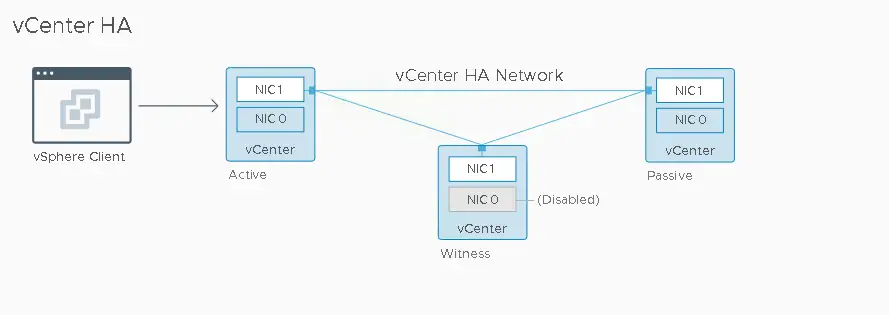

- #Vcenter 6.5 stuck loading cluster update
- #Vcenter 6.5 stuck loading cluster upgrade
- #Vcenter 6.5 stuck loading cluster full
- #Vcenter 6.5 stuck loading cluster license
- #Vcenter 6.5 stuck loading cluster download
However, all hosts you intend to connect to vCenter Server 6.7 should be running ESXi 6.0 or above, hosts running 5.5 and earlier cannot be managed by vCenter 6.7 and do not have a direct upgrade path to 6.7.
#Vcenter 6.5 stuck loading cluster license
The appliance also saves operating system license costs and is quicker and easier to deploy and patch.
#Vcenter 6.5 stuck loading cluster update
Features such as Update Manager are bundled into the VCSA, as well as file based backup and restore, and vCenter High Availability. A couple of releases ago the VCSA reached feature parity with its Windows counterpart, and is now the preferred deployment method for vCenter Server. The VCSA scales up to 2000 hosts and 35,000 virtual machines.
#Vcenter 6.5 stuck loading cluster full
Furthermore the embedded vPostgres database means VMware have full control of the software stack, resulting in significant optimisation for vSphere environments and quicker release of security patches and bug fixes. Since the OS has been developed by VMware it benefits from enhanced performance and boot times over the previous Linux based appliance. The VCSA is a pre-configured virtual appliance built on Project Photon OS.
#Vcenter 6.5 stuck loading cluster download
VCenter 6.7: Download | Release Notes | What’s New | VMware Docs | vSphere Central An existing Windows vCenter can be migrated to VCSA by following the steps in Migrating Windows vCenter Server to VCSA 6.7 This post gives a walk through on a clean installation of VCSA 6.7. All future releases will only be available as vCenter Server Appliance (VCSA) which is the preferred deployment method of vCenter Server. It should be noted that vCenter 6.7 is the final release where Windows modules will be available, see here for more information. The vCenter Server is a centralised management application and can be deployed as a virtual appliance or Windows machine. VMware vCenter Server pools ESXi host resources to provide a rich feature set delivering high availability and fault tolerance to virtual machines. Finally, the Windows vCenter Server and external PSC deployment models are now depreciated and not available with vSphere 7.0. Upgrade to vSphere 7 can be achieved directly from vSphere 6.5.0 and above, for more information see the VMware Upgrade Matrix.

Big thanks to Bill Leck for his guidance.VMware vSphere 6.5 and 6.7 reaches end of general support 15 October 2022, both referenced in the VMware Lifecycle Matrix. If you need to re-install the plugin, please do so through the vCAv on-premises appliance registration. Logging into my vCenter instance, the vCAv plugin is now removed from the Menu and shortcuts window. I am running 6.5, so let me go ahead and stop and start the UI services.

VSphere 6.7 - execute “vmon-cli -r vsphere-ui” vSphere 6.5 - execute “service-control -stop vsphere-ui”, followed by “service-control -start vsphere-ui” 6.5 and 6.7 operate a little differently, so the syntax is listed below. Last of all, we will want to restart the vSphere UI services. Last of all, when attempting to hit the lookup service for it, nothing is listed for ‘vcav’ anymore – Step 4 Now, inputting in the second command and copying the service ID, it successfully removes the endpoint – I’ve also highlighted the service ID as we will need that for the next command. In my environment, we can see the following when I run the first command: usr/lib/vmidentity/tools/scripts/lstool.py unregister -url -user ‘’ -password ‘’ -id 2>/dev/null usr/lib/vmidentity/tools/scripts/lstool.py list -ep-type -url 2>/dev/null Note the space between the URL and the 2>/dev/null. Below are the two commands we will utilize. First, we need to get the ID of the vCAV endpoint, and then unregister it. Next, we need to remove the vCAv entity from the lookupservice SDK. etc/vmware/vsphere-ui/cm-service-packages/.plugin/4.ngc.client-3.0.0 etc/vmware/vsphere-ui/cm-service-packages/.plugin/4.vsphere.client-3.0.0 We need to remove the specific vCAv packages from this folder. UI packages are under the /etc/vmware/vsphere-ui/cm-service-packages folder. I’ve documented the step by step directions below.įirst, I see my vCloud Availability plugin on vCenter instance – Step 1 This is a very easy and straight forward process. Remove endpoints from the lookup service.With 6.7U2, you can skip step 2 – thanks Vladimir Velikov. The following steps will work with vSphere 6.5x and 6.7U1. Therefore, after speaking with a colleague (Bill Leck), I received the steps on removing it from the vCenter instance. Today, there is not a way to do this through the vCAv on-premises appliance UI – it must be done directly on the vCenter. Recently, I had this come up where I had to remove the vCloud Availability 3.0 (vCAv) plugin from my lab vCenter.


 0 kommentar(er)
0 kommentar(er)
